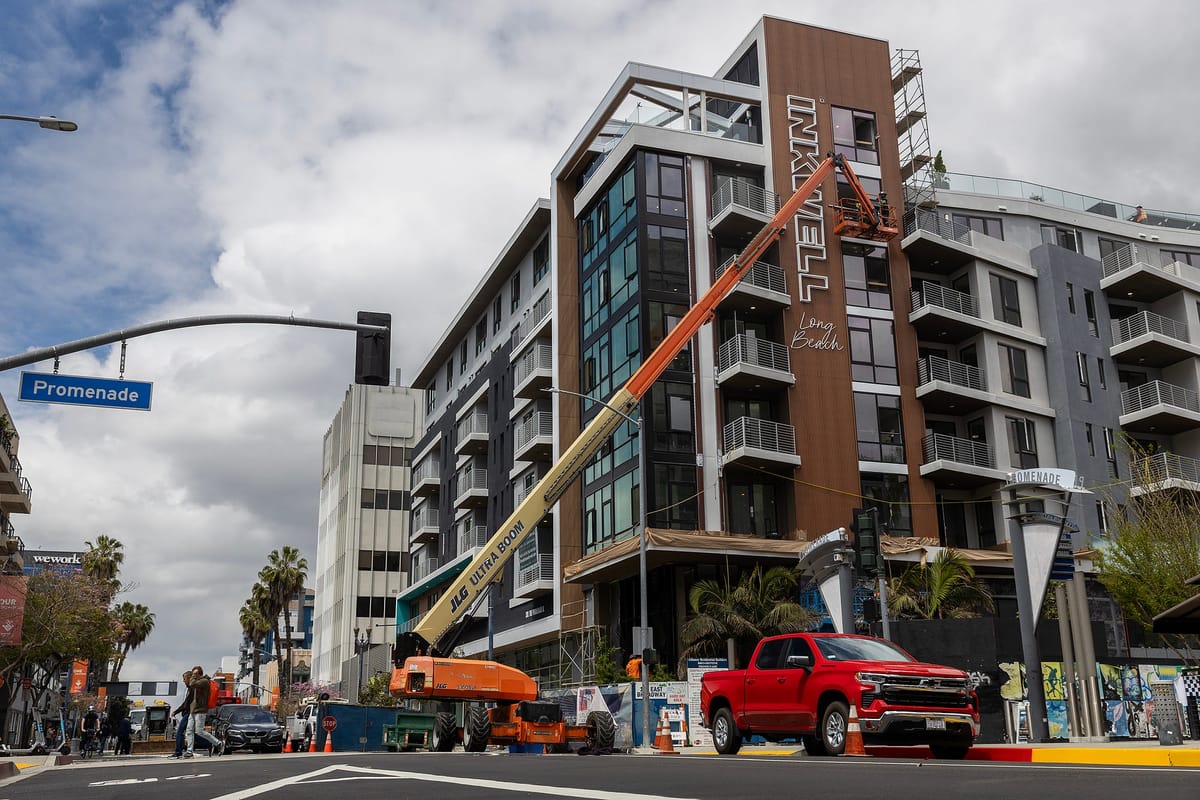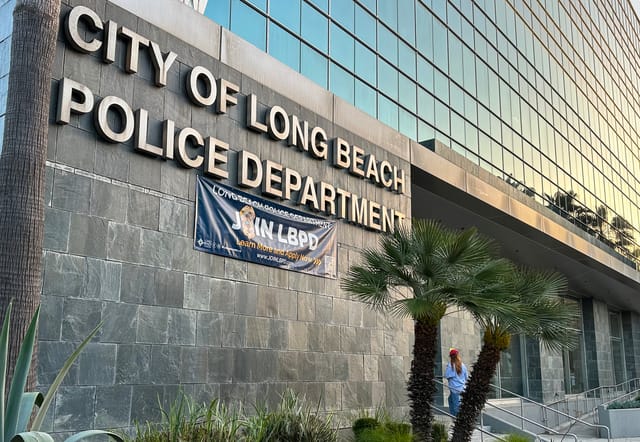Mayor pitches array of housing proposals, including broader requirement for low-income housing production
New developments in Downtown and Midtown have had to include affordable units since 2021, which officials say hasn’t tamped down housing production. Projects approved before 2021 were exempt.

After seeing the results of an affordable housing requirement in Downtown and Midtown, Long Beach Mayor Rex Richardson wants the City Council to consider expanding the mandate across the city.
The extension of “inclusionary zoning” is part of a menu of proposals Richardson will ask the Long Beach City Council to consider on Tuesday. He’s also recommending the city find more money to help first-time homebuyers; look into streamlining the conversion of unused commercial space Downtown into residential units and turning market-rate developments into affordable homes; and continue speeding up approvals of 100% affordable developments, which the city began in early 2023.
But the possible citywide expansion of inclusionary zoning is likely to get the most attention – and to generate the most pushback, both from developers who argue it will make the cost of building untenable, and from residents in single-family neighborhoods who fear it could harm their property values.
Mike Murchison, a local lobbyist whose clients include housing developers, said he thinks a citywide affordable requirement would “significantly” slow down production of new homes, adding that whenever the cost of build goes up, “it becomes more difficult to make projects pencil out.”
In a memo to the council ahead of Tuesday’s meeting, Richardson pointed to the nearly 900 affordable units that the city approved in 2023 — more than the prior four years combined — and concluded that several “near-record years” for proposed and approved housing in Long Beach show inclusionary zoning doesn’t slow production.
Under rules the City Council initially approved three years ago, 11% of new rental units and 10% of for-sale units in new Downtown and Midtown housing projects must be affordable to lower-income families. (Those percentages started in single digits and were phased in.)
According to city data, only 168 of the 851 affordable units that were built from 2021 to 2023 (less than 20%) happened because of the mandate; the majority were in 100% affordable developments, which could have been built without it.
“From staff’s perspective the program is working in that it is producing both market-rate and affordable housing,” and it hasn’t stifled an “overall upward trend in housing production in the city,” Long Beach Community Development Director Christopher Koonz said in an email.
Long Beach Watchdog is a reader-supported publication. To receive new posts and support my work, consider becoming a free or paid subscriber.
As of April, to qualify for affordable housing a household’s annual income must be no more than $77,700 for one person and less than $110,950 for a family of four.
Richardson wants city staff to gather information and bring back recommendations on expanding inclusionary zoning, streamlining development of modular housing, and creating other opportunities to get people into homes they can afford.
Frank Martinez, policy director for the Southern California Association of Non-Profit Housing, said accelerating approval of 100% lower-income developments is “a huge step to building affordable housing faster,” because the typically complex and lengthy process adds to the already high cost of affordable developments.
He also praised Long Beach’s approach of testing the inclusionary zoning mandate in smaller areas to see how it works before expanding to other parts of the city. If inclusionary policies are “done with precision and flexibility,” Martinez said, they may not put a damper on overall housing production.
But Murchison, the lobbyist, warned that requiring affordable units in all new developments may not work in some parts of Long Beach. Land values in Downtown are less than areas like East Long Beach, where few new developments have moved forward in recent years even without an affordable requirement, he said.
As city staff research Richardson’s proposals, “they can talk to affordable developers all day long, but they need to reach out to market-rate developers” for input on potential challenges, Murchison said.
Koontz said the city will collect feedback from residents and property owners before the inclusionary zoning proposal goes to the Planning Commission and City Council for approval. He expects that to happen this year, and the new policy would be phased in over three years.
The Long Beach City Council meets at 5 p.m. Tuesday, May 7, at 411 W. Ocean Blvd. View the meeting agenda here.
We need your support.
Subcribe to the Watchdog today.
The Long Beach Watchdog is owned by journalists, and paid for by readers like you. If independent, local reporting like the story you just read is important to you, support our work by becoming a subscriber.





